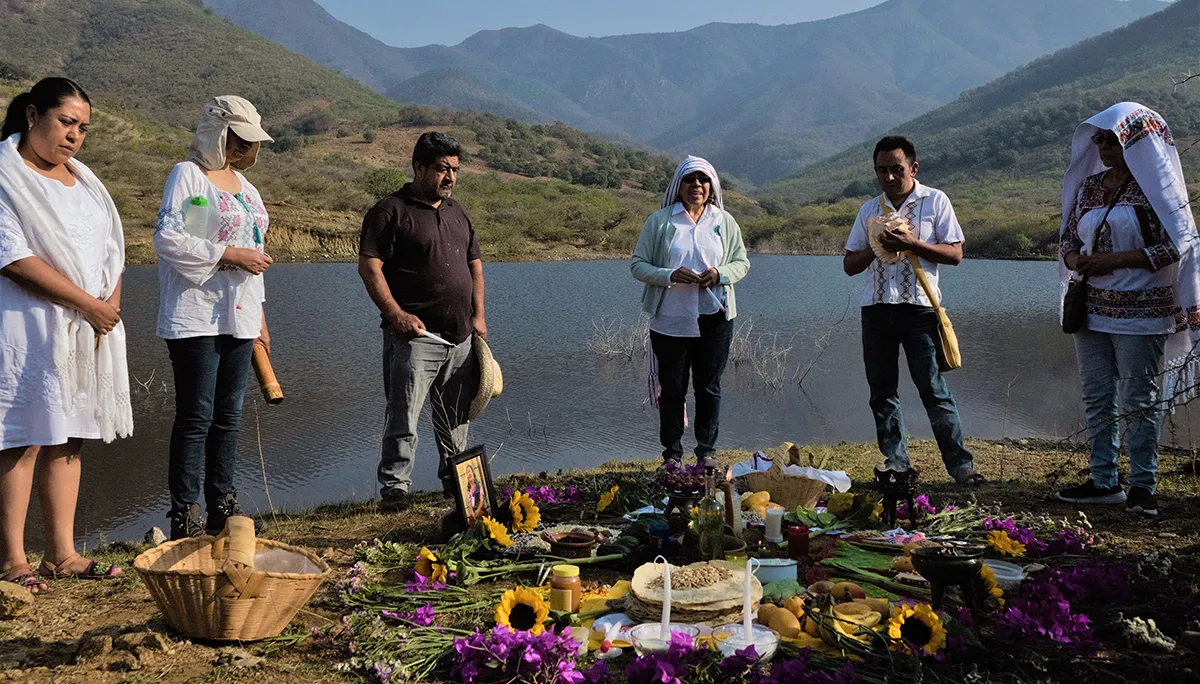Community Actions to the Water Crisis and the Impact of the Landfill in Eastern Zaachila
Organization: Centro de Derechos Indígenas Flor y Canto, A.C.
Mission: We work to generate processes beneficial to Indigenous communities in Oaxaca and, in so doing, contribute to guaranteeing the exercise of, and respect for, their legitimate rights.
Location: Oaxaca’s Central Valleys region.
Communities that will directly benefit from the project: The Vicente Guerrero Municipality and the Lomas de la Cuesta and El Manantial neighborhoods, in eastern Villa de Zaachila Municipality, Oaxaca.
Country: Mexico
Other Organizations Involved: Group for the Promotion of Education and Sustainable Development (Grupedsac), the Metropolitan Autonomous University (UAM), the Zarigüeya Collective, the National Commission for Protected Natural Areas (Conanp), the Zapoteca Espiga de Maíz (“Corn Cob”) Collective and a group from the Coordinating Committee of the United Peoples for Water Defense and Stewardship which initiated the project.

@ Centro de Derechos Indígenas Flor y Canto A.C.
Background
The Vicente Guerrero Municipality and the Lomas de la Cuesta and El Manantial neighborhoods, which are in the Villa de Zaachila Municipality in Oaxaca’s Central Valleys region, are communities afflicted by severe water shortages since 2016. This situation has since turned into a severe drought, which now affects most of the state of Oaxaca. In 2024, the state’s water wells recorded their lowest-ever water levels.
In addition, the area is impacted by a landfill that was in operation for nearly 40 years. This installation, which received solid waste from 28 municipalities, has contaminated various water sources and, in so doing, has put at risk the health of local inhabitants, as well as compromised the availability of the precious water resource.
Moreover, the biodiversity that still exists is at risk in the region’s high country, which is the region’s only intact green space and, as such, serves to mitigate the effects of pollution and drought.
Goals
- Four rainwater collection systems installed in schools by 40 parents who were trained for this task.
- The planting of 1,500 trees of locally endemic species.
- Construction of three infiltration wells and monitoring the observed results.
- Four workshops on “The water cycle and its connection with life and the environment" and four group murals in schools.
- Execution of a communications campaign.
- Two ceremonies to pray for good rainy seasons and two tours to raise awareness of the environmental importance of the high country.
- Elaboration of a buen vivir (good living) environmental agenda.
- Five training workshops on environmental monitoring.
Main activities
- Construction of rainwater collection systems in schools, with community participation, based on the learning by doing approach.
- Reforestation, using native trees, of designated conservation areas and construction of rainwater infiltration wells to restore aquifers.
- Trainings on “the water cycle and its connection with life and the environment” and the launching of a local public education campaign, which will include ceremonies to revive ancestral rituals and reconnect with Mother Earth.
- Integration of the communities’ “Buen vivir (good living) environmental agenda" and development of their environmental monitoring capacities.
Expected outcomes
- Greater availability of clean water for the basic needs of pupils in schools, by means of newly installed rainwater collection systems, as well as the acquisition of the practical know-how needed to replicate these types of installations, including infiltration wells, in public spaces and homes.
- Better protection of water resources and of the forested area restored through community action. A greater and more responsible community connection with the land, as reflected in an increase in participation in conservation activities.
- Acquisition by communities of environmental monitoring capacities, which will assist in making informed local decisions on the implementation of emergency measures.